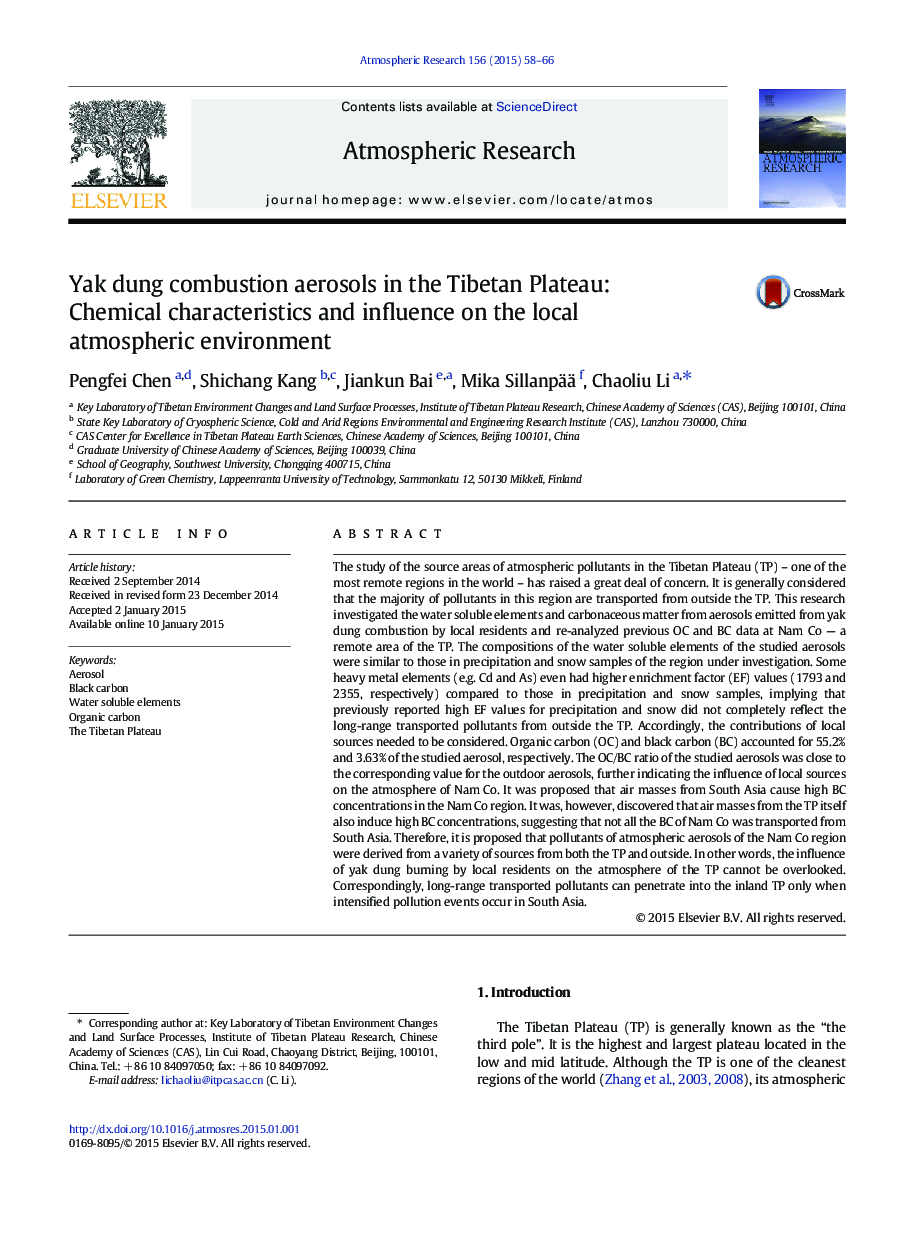| کد مقاله | کد نشریه | سال انتشار | مقاله انگلیسی | نسخه تمام متن |
|---|---|---|---|---|
| 6343337 | 1620517 | 2015 | 9 صفحه PDF | دانلود رایگان |
- Chemical characteristics of yak dung combustion aerosol were studied in the Tibetan Plateau.
- Elemental compositions of yak dung combustion aerosol are close to those of rain samples.
- OC/BC ratio of yak dung combustion aerosol is high and similar to that of outdoor aerosol.
- Trajectory analysis indicates that BC can also be transported from the Tibetan Plateau itself.
- Emission of local residents also contributes to the outdoor aerosol of the Tibetan Plateau.
The study of the source areas of atmospheric pollutants in the Tibetan Plateau (TP) - one of the most remote regions in the world - has raised a great deal of concern. It is generally considered that the majority of pollutants in this region are transported from outside the TP. This research investigated the water soluble elements and carbonaceous matter from aerosols emitted from yak dung combustion by local residents and re-analyzed previous OC and BC data at Nam Co - a remote area of the TP. The compositions of the water soluble elements of the studied aerosols were similar to those in precipitation and snow samples of the region under investigation. Some heavy metal elements (e.g. Cd and As) even had higher enrichment factor (EF) values (1793 and 2355, respectively) compared to those in precipitation and snow samples, implying that previously reported high EF values for precipitation and snow did not completely reflect the long-range transported pollutants from outside the TP. Accordingly, the contributions of local sources needed to be considered. Organic carbon (OC) and black carbon (BC) accounted for 55.2% and 3.63% of the studied aerosol, respectively. The OC/BC ratio of the studied aerosols was close to the corresponding value for the outdoor aerosols, further indicating the influence of local sources on the atmosphere of Nam Co. It was proposed that air masses from South Asia cause high BC concentrations in the Nam Co region. It was, however, discovered that air masses from the TP itself also induce high BC concentrations, suggesting that not all the BC of Nam Co was transported from South Asia. Therefore, it is proposed that pollutants of atmospheric aerosols of the Nam Co region were derived from a variety of sources from both the TP and outside. In other words, the influence of yak dung burning by local residents on the atmosphere of the TP cannot be overlooked. Correspondingly, long-range transported pollutants can penetrate into the inland TP only when intensified pollution events occur in South Asia.
Journal: Atmospheric Research - Volume 156, 1 April 2015, Pages 58-66
